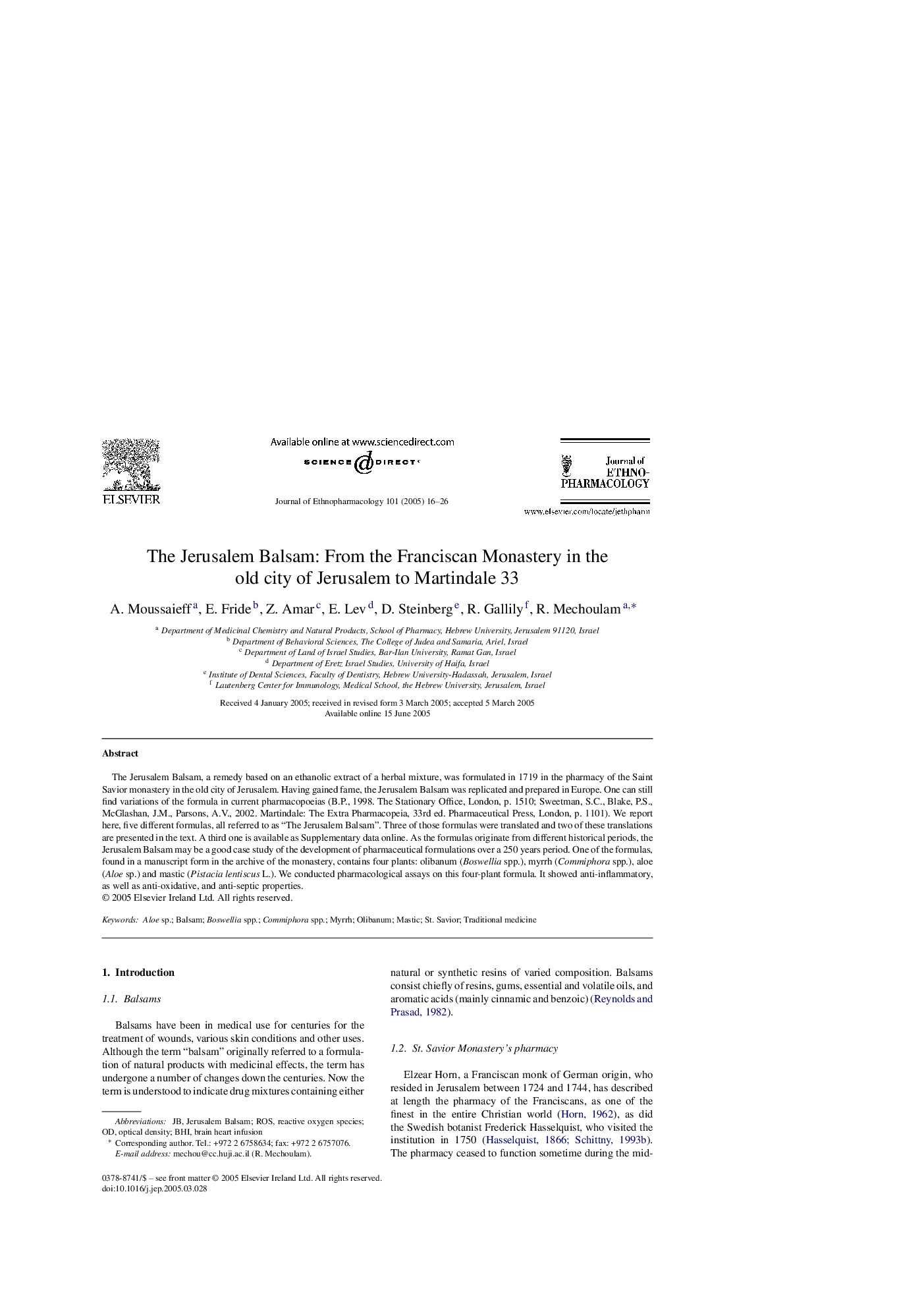| Article ID | Journal | Published Year | Pages | File Type |
|---|---|---|---|---|
| 9011147 | Journal of Ethnopharmacology | 2005 | 11 Pages |
Abstract
The Jerusalem Balsam, a remedy based on an ethanolic extract of a herbal mixture, was formulated in 1719 in the pharmacy of the Saint Savior monastery in the old city of Jerusalem. Having gained fame, the Jerusalem Balsam was replicated and prepared in Europe. One can still find variations of the formula in current pharmacopoeias (B.P., 1998. The Stationary Office, London, p. 1510; Sweetman, S.C., Blake, P.S., McGlashan, J.M., Parsons, A.V., 2002. Martindale: The Extra Pharmacopeia, 33rd ed. Pharmaceutical Press, London, p. 1101). We report here, five different formulas, all referred to as “The Jerusalem Balsam”. Three of those formulas were translated and two of these translations are presented in the text. A third one is available as Supplementary data online. As the formulas originate from different historical periods, the Jerusalem Balsam may be a good case study of the development of pharmaceutical formulations over a 250 years period. One of the formulas, found in a manuscript form in the archive of the monastery, contains four plants: olibanum (Boswellia spp.), myrrh (Commiphora spp.), aloe (Aloe sp.) and mastic (Pistacia lentiscus L.). We conducted pharmacological assays on this four-plant formula. It showed anti-inflammatory, as well as anti-oxidative, and anti-septic properties.
Keywords
Related Topics
Health Sciences
Pharmacology, Toxicology and Pharmaceutical Science
Pharmacology
Authors
A. Moussaieff, E. Fride, Z. Amar, E. Lev, D. Steinberg, R. Gallily, R. Mechoulam,
